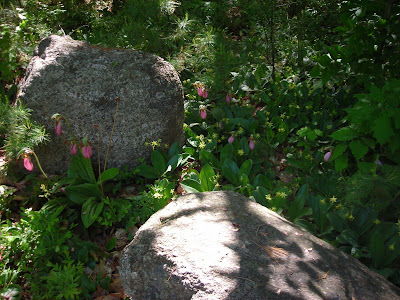The Bees
We purchased a Dwarf Granny Smith tree for our first fruit tree and we were in need of figuring out whether or not we could help it live, how to help it fruit, etc.
There is a small section on the weather page of the paper called “weather extremes.” In the paper today: National extremes in the 48 contiguous states,
High: 103 Death Valley California,
Low: 18 Berlin, New Hampshire.
I hope this in no where near you! Don't worry, we are few hours South of there.
This week’s tip is pollination, which won’t happen if it is 18o. In your vegetable and fruit garden bees and insects are important. The blossoms won’t set and fruit and vegetables won’t develop, if they h aven’t been pollinated. Some plants like apples and other fruit need a different variety of apple pollen to fertilize the blossom. This can be tricky because not all apple trees bloom at the same time. I don’t know about your granny smith, but I have listed some web sites and more technical articles below for you to search out what will work. Even if a neighbor has an apple tree that blooms at the same time and you have a good supply of bees, your single tree may b e fine, but you should check it out.
Also keep in mind that some trees are just male or just female. The nut trees like the Hazel nut must be planted in pairs. I am trying to develop more native plants around the fence line. A few weeks ago I set aside some cuttings from the Hazel trunk sprouts when I remembered we have two Haze ls planted next to each
other because they need each other for pollen and fertilization. We had to carefully make stacks of cuttings from each tree and as I planted them, I hope that I planted the sprout cuttings close enough in pairs for fertilization.
Some fruit and vegetables like squash or tomatoes are self pollinating. Pollen on a single plant from male parts of blossoms to female parts of blossoms will create fertilization, but ther e is better and greater chance for fertilization if you have more than one plant or tree. I have played bee or pollinator. When I have grown tomatoes or squash in small spaces like our roof top, where I had only one plant and not many bees, I have picked the male blossoms and stuck them on female blossoms in order to get the necessary fertilization for fruit . You shouldn’t have to do that in your garden because you will have plenty of room for more than one plant of each variety you grow.
One year I planted differ ent varieties of squash and pumpkin too close together. I got zucchini pumpkins! They were greenish orange oblong vegetables suitable for the compost bin ! Those bees just collect and fail to discriminate by variety. Pollenization is probably the way growers are developing the weird color to pumpkins, ghost pumpkins? If you really want to know more about genetics and fertilization read ab out the
monk Mendel and his peas. I read “Mendel’s Dwarf” by Simon Mawer; it is a good read, but save it f or winter when you have time. I'm not sure if we have bees. I honestly haven't see on since we moved in last year.
Sustainable Horticulture from the University of new Hampshire
http://horticulture.unh.edu/links.html
Successful pollination
In order to have successful pollination, it is necessary to have two different varieties of apple trees. Aha! We need another apple tree. How about a Gala? Most apple varieties are self-unfruitful, which means their blossoms must be fertilized with the pollen of a separate variety in order to achieve good fruit set. A few varieties, including 'Rome Beauty' and 'Ne wtown', are considered self-fruitful, meaning their blossoms can be fertilized with their own pollen, but even these a pples produce more fruit if they are cross-pollinated by another variety. It's important to choose varieties that have compatible pollen and bloom times. The Raintree Nursery catalog and Web site have a very helpful pollination chart that details which apple varietie s are compatible.
Apples also need pollinators—certain wasps these we have, lots!, flies, and bees—to transfer pollen from one variety to the other. The apple trees must be planted within 100 feet of each other in order to help ens ure that the pollinators visit both trees. If you have only one apple tree in your yard or incompatible varieties, all is not lost. Crabapple pollen fertilizes apple blossoms. So if you have a crabapple in the vicinity that blooms concurr ently with your apple tree, you're in business. Grafting a branch of a compatible variety onto your existing tree is ano ther option, though I recommend you hire an arborist to perform this job. You can also use an old, very effective or chardist trick, says Matthew Rogoyski, Ph.D., a horticulturist at Colorado State University. "Put a bouquet of crabapple branches in bloom in a 5-gallon bucket of water and place it inside the canopy of the tree," says Dr. Rogoyski. "Then bees can visit the crabapple blossoms and transfer the pollen to the apple blossoms." Hmmm intersting...
A couple of caveats, before leaving the issue of pollination:
The pollen of some apple varieties is sterile, so don't rely on these as your pollinizers. Examples are Jonagold, Mutsu, Stayman and Winesap. The transfer of pollen from one apple blossom to another is largely the work of those busy little garden friends, the bees. So be careful not to apply insecticides during the blooming period -- or you'll lose your best means of pollination.
We're definitely not planning on using insecticides but we will definitely need to employ deer deterrent... dog fur, people hair, shiny objects?

